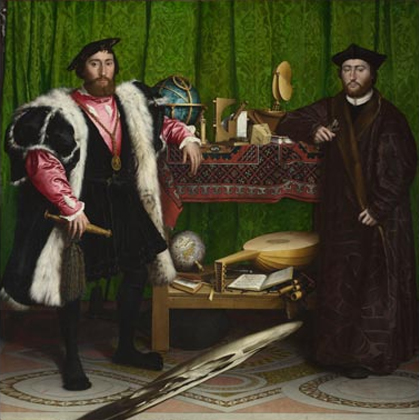In 1533 England was poised to opt out of Catholicism and Europe was in turmoil. Jean de Dinteville and Georges de Selve, the subjects of Holbein's The Ambassadors, were at the centre but powerless. Andrew Graham-Dixon decodes the restored masterpiece
The weather was freezing, his lodgings were damp and he was unable to shake off an apparently interminable cold in the head. "I am, and have been, very weary and wearisome," he wrote to his family. "I am the most melancholy, weary and wearisome ambassador in the world." 1533 was a bad year for Jean de Dinteville. But with the help of Hans Holbein he managed to put a brave face on it.
Dinteville is the man on the left in Holbein's recently restored masterpiece The Ambassadors, wearing the salmon-coloured satin shirt and the black silk gown lined with lynx fur. This was probably the outfit he bought to wear to Westminster Abbey as France's representative at the coronation of Ann Boleyn, Henry VIII's new queen; and he resented how much attendance at this inauspicious ceremony cost him. "I shall have to go to great expense for this coronation," he complained in another of his gloomy letters home. Holbein, who was himself something of a diplomat, portrayed Dinteville with a countenance unclouded by any such mundane concerns. Wary and self- possessed, the French ambassador stares out from the canvas as if daring us to guess his thoughts. Those of his companion, Georges de Selve, the Bishop of Lavaur, seem even more cloaked. He is the living image of inscrutability. Impassive and sombre, there is a secretiveness about him which extends even to his posture. He holds his long damask robe about him almost defensively. He leans on a closed book, which seems appropriate since he presents himself to...

Holbein's inner game
01-11-1997

